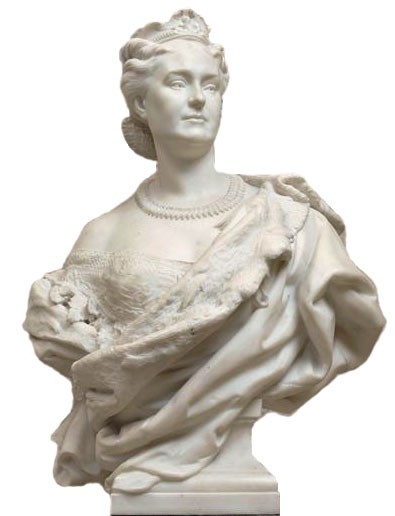After enjoying success in 1856, a year which saw him awarded the Prix de Rome, Carpeaux settled in the eternal city to continue his education. However, success was to seek him out once more. His entry for the Salon in 1859, a charming sculpture of a young Neapolitan fisherboy, was poorly received by the jury because of the subject's lack of “altitude”, but succeeded in seducing the Parisian public. Next came his Ugolino group, a masterpiece with more than a hint of the Michelangelo to it, which drew much admiration from the French community in Rome, including Alexandre Dumas, fils – who would remain a close friend – and the future surintendant des Beaux-Arts, the Comte de Nieuwerkerke, who visited Carpeaux in person in 1861 to offer his congratulations.
Upon his return to Paris in February 1862, Carpeaux – through connections he had made at Rome (the Marquis de Piennes, Chambellan de la Cour and Grand Ecuyer de l'Impératrice, and the Marquise de la Valette, wife of the French ambassador to the Holy See) – began to frequent the salon held by Princess Mathilde. His bust portrait of the emperor's cousin – the marble version of which was exhibited at the Salon in 1863 – cemented his reputation and established him at the imperial court.
The bust of Mathilde is part of a wider French tradition of grand portraiture. This powerful, sweeping work combines imperial tropes – the dress adorned with bees, the majestically draped ermine cloak, the eagle diadem, and the pearl necklace (a present from Napoleon I to the princess's mother) – with an extremely subtle observation of its model. This sensitivity is delicately highlighted in a second version of the bust, stripped of its imperial emblems, which was offered to the princess's close friends, most notably Sainte Beuve.
Even as an official artist to the court during the Second Empire, Carpeaux remained a brilliant creative force, capable of marrying classical and baroque influences with the passion of the great romantics of the 19th century. It is this inherited sumptuousness that lies behind Carpeaux's magnificent portrait of Mathilde, sumptuousness that, incidentally, would not be bestowed upon later depictions of the imperial family, such as the gentle group statue of the Prince Imperial and his dog, Nero (1866), or the poignant bust of Napoleon III, completed after the sovereign's death in 1873. As far as Eugenie is concerned, effigies of the empress never developed beyond sketches.
Karine Huguenaud (tr. H.D.W.)
September 2011
A description of Carpeaux's painting, Costume Ball at the Tuileries Palace, is also available on napoleon.org.
Princess Mathilde
Artist(s) : CARPEAUX Jean-Baptiste

- Date :
- 1862
- Technique :
- Marble
- Dimensions :
- H = 95.3 cm, L = 70.4 cm, P = 43.7 cm
- Place held :
- Musée d'Orsay, Paris

